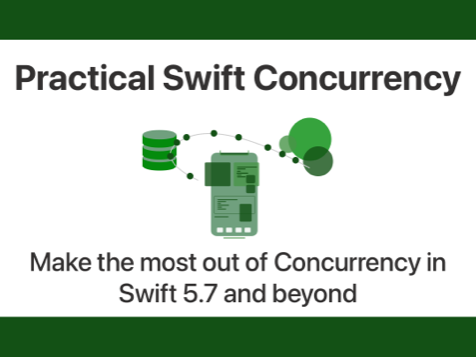
Subscribe to my newsletter and never miss a post
Learn more about Uncategorized
No results found
Expand your learning with my books

Learn everything you need to know about Swift Concurrency and how you can use it in your projects with Practical Swift Concurrency. It contains:
- Eleven chapters worth of content.
- Sample projects that use the code shown in the chapters.
- Free updates for future iOS versions.
The book is available as a digital download for just $39.99!
Learn more